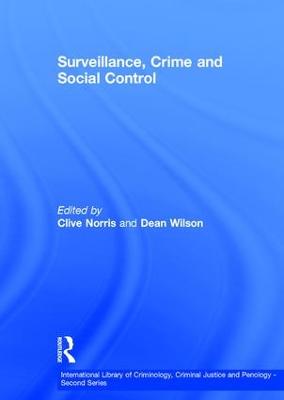Biosocial Theories of Crime
 -15%
portes grátis
-15%
portes grátis
Biosocial Theories of Crime
Beaver, KevinM.
Taylor & Francis Ltd
08/2010
522
Dura
Inglês
9780754629191
15 a 20 dias
1246
Descrição não disponível.
Contents: Introduction; Part I Statements on the Biosocial Perspective: Biological perspectives in criminology, Diana H. Fishbein; Segregation and stratification: a biosocial perspective, Douglas S. Massey; Adolescence-limited and life-course-persistent anti-social behaviour: a developmental taxonomy, Terrie E. Moffitt; Behavior genetics and anomie/strain theory, Anthony Walsh; H.J. Eysenck in Fagin's kitchen: the return to biological theory in 20th-century criminology, Nicole Hahn Rafter. Part II Genetics and Crime: Behavior genetics of aggression in children: review and future directions, Lisabeth Fisher DiLalla; The new look of behavioral genetics in developmental psychopathology: gene-environment interplay in antisocial behaviors, Terrie E. Moffitt; Role of genotype in the cycle of violence in maltreated children, Avshalom Caspi, Joseph McClay, Terrie E Moffitt, Jonathan Mill, Judy Martin, Ian W. Craig, Alan Taylor and Richie Poulton; The integration of genetic propensities into social-control models of delinquency and violence among male youths, Guang Guo, Michael E. Roettger and Tianji Cai; The interaction between genetic risk and childhood sexual abuse in the prediction of adolescent violent behavior, Kevin M. Beaver; Sources of exposure to smoking and drinking friends among adolescents: a behavioral-genetic evaluation, H. Harrington Cleveland, Richard P. Wiebe and David C. Rowe. Part III Evolutionary Psychology and Crime: Gene-based evolutionary theories in criminology, Lee Ellis and Anthony Walsh; Self control, social control and evolutionary psychology: towards an integrated perspective on crime, Augustus Brannigan; A gene-based evolutionary explanation for the association between criminal involvement and number of sex partners, Kevin M. Beaver, John Paul Wright and Anthony Walsh; Women and crime: an evolutionary approach, Anne Campbell, Steven Muncer and Daniel Bibel; Why men commit crimes (and why they desist), Satoshi Kanazawa and Mary C. Still. Part IV Neuroscience and Crime: Neuroanatomical background to understanding the brain of the young psychopath, James H. Fallon; The roles of orbital frontal cortex in the modulation of antisocial behavior, R.J.R. Blair; A social neuroscience perspective on adolescent risk-taking, Laurence Steinberg; Brain abnormalities in murderers indicated by positron emission tomography, Adrian Raine, Monte Buchsbaum and Lori LaCasse; Reduced prefrontal and increased subcortical brain functioning assessed using positron emission tomography in predatory and affective murderers, Adrian Raine, J. Reid Meloy, Susan Bihrle, Jackie Stoddard, Lori LaCasse and Monte Buchsbaum; Name Index.
Este título pertence ao(s) assunto(s) indicados(s). Para ver outros títulos clique no assunto desejado.
Young Men;Adrian Raine;Antisocial Behavior;Alan Taylor;Instrumental Conditioning;Anne Campbell;Adolescence Limited Delinquency;Anthony Walsh;Add Health Participants;Augustine Brannigan;Add Health Study;Avshalom Caspi;Add Health;Daniel Bibel;Age Crime Curve;David C. Rowe;Nonshared Environments;Diana H. Fishbein;Violent Delinquency;Douglas S. Massey;MAOA Genotype;Guang Guo;MAOA Gene;H. Harrington Cleveland;Behavior Genetic;Ian W. Craig;Add Health Data;J. Reid Meloy;GE Correlation;Jackie Stoddard;Canthomeatal Line;James H. Fallon;Behavior Genetic Studies;John Paul Wright;Add Health Respondents;Jonathan Mill;Medial Frontal Gyrus;Joseph Mcclay;Hemisphere Interaction;Judy Martin;Federal Bureau Of Investigation;Kevin M. Beaver;Orbital Frontal Cortex;Laurence Steinberg;MAOA Activity;Lee Ellis;Full Ace Model;Lisabeth Fisher Dilalla;Predatory Murderers;Lori Lacasse;Mary C. Still;Michael E. Roettger;Monte Buchsbaum;Monte S. Buchsbaum;Nicole Hahn Rafter;R.J.R. Blair;Raine Adrian;Richard P. Wiebe;Richie Poulton;Satoshi Kanazawa;Steven Muncer;Susan Bihrle;Terne E. Moffitt;Terrie E. Moffitt;Tianji Cai
Contents: Introduction; Part I Statements on the Biosocial Perspective: Biological perspectives in criminology, Diana H. Fishbein; Segregation and stratification: a biosocial perspective, Douglas S. Massey; Adolescence-limited and life-course-persistent anti-social behaviour: a developmental taxonomy, Terrie E. Moffitt; Behavior genetics and anomie/strain theory, Anthony Walsh; H.J. Eysenck in Fagin's kitchen: the return to biological theory in 20th-century criminology, Nicole Hahn Rafter. Part II Genetics and Crime: Behavior genetics of aggression in children: review and future directions, Lisabeth Fisher DiLalla; The new look of behavioral genetics in developmental psychopathology: gene-environment interplay in antisocial behaviors, Terrie E. Moffitt; Role of genotype in the cycle of violence in maltreated children, Avshalom Caspi, Joseph McClay, Terrie E Moffitt, Jonathan Mill, Judy Martin, Ian W. Craig, Alan Taylor and Richie Poulton; The integration of genetic propensities into social-control models of delinquency and violence among male youths, Guang Guo, Michael E. Roettger and Tianji Cai; The interaction between genetic risk and childhood sexual abuse in the prediction of adolescent violent behavior, Kevin M. Beaver; Sources of exposure to smoking and drinking friends among adolescents: a behavioral-genetic evaluation, H. Harrington Cleveland, Richard P. Wiebe and David C. Rowe. Part III Evolutionary Psychology and Crime: Gene-based evolutionary theories in criminology, Lee Ellis and Anthony Walsh; Self control, social control and evolutionary psychology: towards an integrated perspective on crime, Augustus Brannigan; A gene-based evolutionary explanation for the association between criminal involvement and number of sex partners, Kevin M. Beaver, John Paul Wright and Anthony Walsh; Women and crime: an evolutionary approach, Anne Campbell, Steven Muncer and Daniel Bibel; Why men commit crimes (and why they desist), Satoshi Kanazawa and Mary C. Still. Part IV Neuroscience and Crime: Neuroanatomical background to understanding the brain of the young psychopath, James H. Fallon; The roles of orbital frontal cortex in the modulation of antisocial behavior, R.J.R. Blair; A social neuroscience perspective on adolescent risk-taking, Laurence Steinberg; Brain abnormalities in murderers indicated by positron emission tomography, Adrian Raine, Monte Buchsbaum and Lori LaCasse; Reduced prefrontal and increased subcortical brain functioning assessed using positron emission tomography in predatory and affective murderers, Adrian Raine, J. Reid Meloy, Susan Bihrle, Jackie Stoddard, Lori LaCasse and Monte Buchsbaum; Name Index.
Este título pertence ao(s) assunto(s) indicados(s). Para ver outros títulos clique no assunto desejado.
Young Men;Adrian Raine;Antisocial Behavior;Alan Taylor;Instrumental Conditioning;Anne Campbell;Adolescence Limited Delinquency;Anthony Walsh;Add Health Participants;Augustine Brannigan;Add Health Study;Avshalom Caspi;Add Health;Daniel Bibel;Age Crime Curve;David C. Rowe;Nonshared Environments;Diana H. Fishbein;Violent Delinquency;Douglas S. Massey;MAOA Genotype;Guang Guo;MAOA Gene;H. Harrington Cleveland;Behavior Genetic;Ian W. Craig;Add Health Data;J. Reid Meloy;GE Correlation;Jackie Stoddard;Canthomeatal Line;James H. Fallon;Behavior Genetic Studies;John Paul Wright;Add Health Respondents;Jonathan Mill;Medial Frontal Gyrus;Joseph Mcclay;Hemisphere Interaction;Judy Martin;Federal Bureau Of Investigation;Kevin M. Beaver;Orbital Frontal Cortex;Laurence Steinberg;MAOA Activity;Lee Ellis;Full Ace Model;Lisabeth Fisher Dilalla;Predatory Murderers;Lori Lacasse;Mary C. Still;Michael E. Roettger;Monte Buchsbaum;Monte S. Buchsbaum;Nicole Hahn Rafter;R.J.R. Blair;Raine Adrian;Richard P. Wiebe;Richie Poulton;Satoshi Kanazawa;Steven Muncer;Susan Bihrle;Terne E. Moffitt;Terrie E. Moffitt;Tianji Cai











